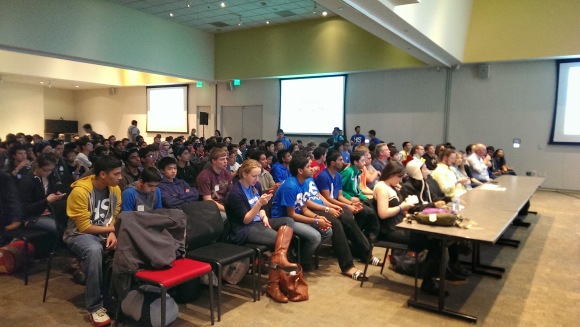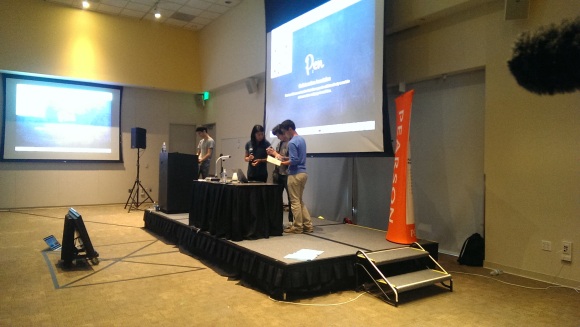
Inside the High School Hackathon Scene
My ongoing exploration of coding opportunities for kids led me to the HighSchoolHacks event this past weekend at PayPal HQ. I felt this invigorating energy as soon as I walked in and to some it probably represented the ideal high school of the future. Beyond the space itself, the organizers clearly have a strong grasp of how setting the right tone and expectations is an important aspect of building a healthy hacker community.
Having supported #HackLynbrook, a student-organized hackathon at a local high school, I had a general sense of what to expect, however, this event blew me away. According to HSHacks Founder, Shrav Mehta, there were over 1000 students present throughout the course of the weekend, with 550 staying overnight and 150 teams presenting their projects. (You can read about some of the specific hacks in this post from VentureBeat.) Between the impressive list of sponsors and judges (including usual suspects Pearson and Amplify) there was no shortage of support for this event.
One of the judges captured the essence of the event perfectly, telling the room full of students that “you’re challenging teachers to do more and I’m taking that message back to them.” As schools explore how best to integrate computer science into their curriculum, it is essential that they consider the role of space and culture on teaching kids to code. However, it was clear that as K12 schools struggle with introducing authentic CS learning opportunities, many students are already figuring it out themselves.
NCLB: No Coder Left Behind
Witnessing the energy and enthusiasm these students put into their projects over the course of the weekend was inspiring, but the lack of diversity in the room illustrates how efforts like this often perpetuate the digital divide. The lack of girls present was stark, and not surprisingly the male attendees were predominantly Indian and Asian. This reality makes programs that help bring under-represented students into the hacker community, like GirlsWhoCode, TechBridge and CodeNow, even more important.

I tracked down a few female participants, including Michelle Yeung, who started the GirlsWhoCode chapter at Lowell High School in SF and recruited fellow members to join her for this event. Wendy (pictured above), who made the trek all the way up from Irvine, was one of the only girls to make it to the final round.
The team with the highest energy was definitely the trio from East Palo Alto Phoenix Academy, who also took the opportunity to promote CodeCamp, a free summer camp and after-school program they run to teach kids to code. The impact of these authentic hacker experiences, especially for new coders, is profound. Shadi Barhoumi, one of the CodeCamp instructors shared that “our kids were so focused and excited to code today after the hackathon, because they finally understand why coding is cool and useful and fun.”
It was amazing to see the level of student engagement and learn how attendees keep that energy flowing beyond the weekend. Resources like Hackers Under 20 and StudentRND are just a couple that support young hackers. While education policy wonks debate the best way to teach kids to code and if CS should take the place of a foreign language, many students are ready to hack their future and are clearly not going to wait for schools to figure it out.